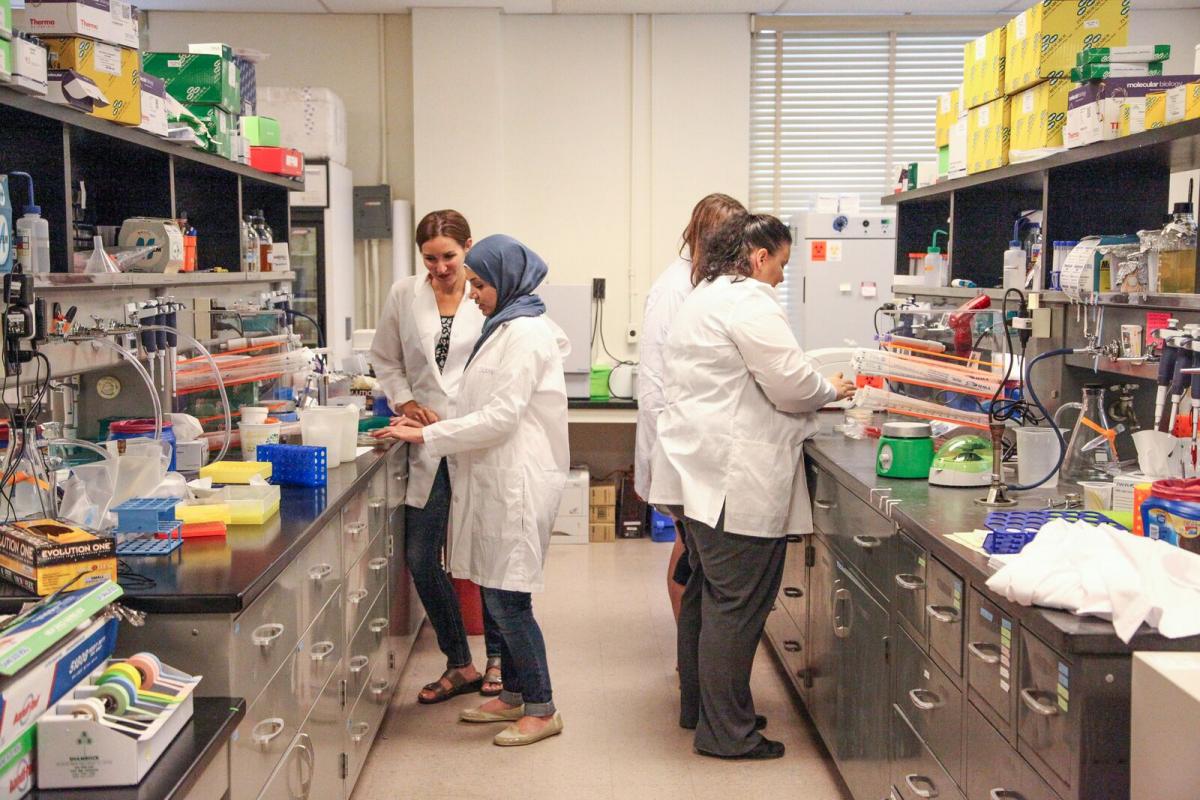OSU researchers receive funding to examine broader impact of a common STI
Tuesday, August 4, 2015

The bacteria Chlamydia trachomatis is the leading cause of preventable infection blindness worldwide and is the most frequently reported sexually transmitted bacterial infection.
With help from a National Institute of Health (NIH) grant totaling almost $430,000, two Oklahoma State University researchers aim to shed light on the development and spread of C. trachomatis and how cells are mutated by the bacteria.
Dr. Erika Lutter, an assistant professor with OSU’s Department of Microbiology and Molecular Genetics, specializes in bacterial pathogenesis and has been working extensively on chlamydia research dating back to her doctoral days.
Dr. Jennifer Shaw, an assistant professor with OSU’s Department of Integrative Biology, specializes in vascular (blood vessel) biology and infectious diseases and is returning to chlamydia research with this project.
The two women will study how C. trachomatis interacts with the myosin phosphatase protein. The myosin protein has been studied in regard to cancer research, but Lutter and Shaw’s research marks the first time the protein’s relationship to chlamydia (and to sexually transmitted infections in general) will be studied.
“We can kill the chlamydia bacteria through the use of antibiotics,” Lutter says. “But that doesn’t mean the cell goes back to the way it was. We hope to use this research to look at the mutated cells for potential biomarkers of other long-term consequences such as cervical cancer.”
The NIH grant will fund the research project for three years with the possibility of renewal. Lutter will focus on genetics and developing the bacterial cultures, while Shaw will focus on the effects of the interaction between C. trachomatis and myosin phosphatase during the course of infection in vivo. Two graduate students and five undergraduate students are slated to help with the research.
While chlamydia may be a taboo topic because of its association as a sexually transmitted infection, Shaw says that the research project provides a “training ground” for many OSU students who are pre-medical.
“If you’re going to be a physician, you’re going to run into chlamydia,” Shaw says. “However, because we have access to the resources to treat a chlamydia infection in the U.S., we live somewhat in a bubble. Many people don’t realize its global effects, such as blindness, or other long-term consequences such as infertility.”
Over the next three years, Lutter and Shaw hope to learn more about the way chlamydia interacts with the myosin protein so they can help with early detection of other health risks the bacteria influences. While this is the project’s main goal, they don’t discount the possibility of getting closer to a vaccine if the data leads them in that direction.
“Science takes time,” Lutter says. “It’s going to take a few years to collect this data. We just feel very happy and lucky to be involved with this research because we want to make a difference in any way we can.”
About
The Center for Disease Control reports that nearly 3 million Americans experience
new chlamydia infections each year. In 2013, Oklahoma was estimated to account for
a little more than 18,000 of those cases.
Globally, the bacterium leaves 500 million people at risk of blindness. Other effects include elevated risks of cervical cancer, pelvic inflammatory disease, infertility and conjunctivitis. Visit www.cdc.gov for more information on chlamydia.
